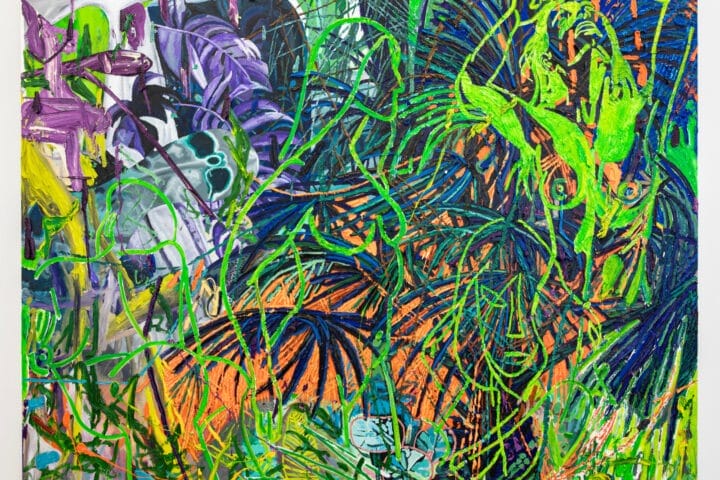FRANCIS BACON TRIPTYCH SELLS FOR
$84.6 MILLION / £68.4 MILLION / HK$656 MILLION
IN SOTHEBY’S LIVE-STREAMED EVENING SALES
An Online Bidder Participating from Asia Competes with a Determined Client Bidding by Phone with Grégoire Billault of Sotheby’s New York Contemporary Art Department in a Dramatic 10-Minute Battle for Bacon’s Large-Format Masterpiece:
Triptych Inspired by the Oresteia of Aeschylus
Sold to the Phone Bidder for a Price Surpassing the Work’s $80 Million High Estimate, and Marking the Third-Highest Auction Result for the Artist
LEADING SOTHEBY’S ONGOING GLOBAL AUCTION EVENT
Conducted remotely by Chairman and auctioneer Oliver Barker in London, taking bids from Sotheby’s specialists on phone banks in New York, Hong Kong & London, as well as online bidders. The ongoing sales are live-streamed to the world via seamless, real time video.
A Landmark of 20th Century Art, Inspired by Aeschylus’s Trilogy of Greek Tragedies from the 5th Century B.C.
**
One of 28 Large-Format Triptychs that Bacon Created Between 1962 and 1991, and Only the 6th Example Ever to Appear at Auction
**
Acquired in 1984 by the Norwegian Collector Hans Rasmus Astrup, the Triptych Has Been in the Care of Astrup Fearnley Museet in Oslo Since Its Founding by Mr. Astrup in 1993
** SOTHEBY’S LIVESTREAMED EVENING AUCTIONS CONTINUE **
Watch the Sale Live
ABOUT TRIPTYCH INSPIRED BY THE ORESTEIA AESCHYLUS
Inspired by Aeschylus’s trilogy of Greek tragedies dating to the 5th century B.C., the present triptych stands as one of the most ambitious, enigmatic, and important works of Bacon’s oeuvre, and a landmark of 20th century art. In this work from 1981, Bacon revisits the same classical text that inspired Three Studies for Figures at the Base of the Crucifixion that announced his debut on the world stage in 1962 – which now resides in the Tate Collection, London. A parallel to that early triumph, Triptych Inspired by the Oresteia of Aeschylus reveals in a single work the entire range of Bacon’s iconography, developed over three decades of painting.
Triptych Inspired by the Oresteia of Aeschylus is one of 28 large-format triptychs (78 inches / 198 cm tall) that Bacon created between 1962 and 1991. The present example represents only the 6th large-format triptych ever to appear at auction, and the first to be offered since 2014. Triptych Inspired by the Oresteia of Aeschylus was most recently on view in the Centre Pompidou’s celebrated exhibition Bacon: Books and Painting.
Norwegian collector Hans Rasmus Astrup acquired Triptych Inspired by the Oresteia of Aeschylus from Marlborough Fine Art Ltd., London in 1984. The work has been in the care of Astrup Fearnley Museet in Oslo, a private museum founded by Mr. Astrup in 1993 to manage his collection and allow public access to these private holdings.
In 2013, Mr. Astrup donated all of his commercial assets and their holdings of art to the Hans Rasmus Astrup Foundation. Proceeds from the sale of Triptych Inspired by the Oresteia of Aeschylus will strengthen the Foundation and underlying entities to ensure long-term support of the Astrup Fearnley Museet, and in particular to expand and diversify the Astrup Fearnley Collection housed therein.
Bjørn Rønneberg, Chairman of Astrup Fearnley Museet, said: “While it is undoubtedly difficult to part with such an important work, this sale will support Astrup Fearnley Museet and secure a long, sustainable future for the institution as it enters a new chapter. In particular, the sale will provide significant funding to further support and diversify our collection through future acquisitions.”
Hans Rasmus Astrup added: “Astrup Fearnley Museet is meant to be a lasting resource for the public, as it builds on the existing collection and grows beyond it. With this single sale we can ensure that the museum and collection are here in perpetuity.”
A masterpiece of the first order, Triptych Inspired by the Oresteia of Aeschylus provokes a range of interpretations, matching the tragic grandeur of the Greek playwright Aeschylus in a 20th century setting.
Bacon’s theme of divine punishment is found in Aeschylus’ most famous trilogy, The Oresteia, in which Clytemnestra murders her husband Agamemnon in revenge for the sacrifice of their daughter, Iphigenia. When the son Orestes finds out, he kills his mother to avenge his father’s death, provoking the avenging Furies, also called the Eumenides, who determine to drive Orestes insane as punishment.
Bacon received a copy of William Bedell Stanford’s Aeschylus and his Style: a Study in Language and Personality soon after it was published in 1942. Aeschylus’s imagery provided Bacon a vehicle for expressing “something very powerful and very fundamental about existence”. From Aeschylus’ imagery, Bacon compiled motifs that struck a chord with his own experience and filtered into his art. As he explains, “I’ll tell you what I really read: things which bring up images for me. And I find that this happens very much with the translations of Aeschylus… they open up the valves of sensation for me”.
Bacon used literary references to jolt his own imagination, having no interest in the lofty goals of narrative history painting. The goal of Greek tragedy was to incite catharsis in the viewer – in appropriating its iconography, Bacon exorcised something in himself. The enduring appeal of his work is its power to endlessly provoke the most fundamental of human emotions. Although Bacon frequently cited Aeschylus as an inspiration, this was the only instance where the Greek dramatist was referred to in the title of a painting.
Matching the epic grandeur of the progenitor of tragedy, Bacon recorded something primal about the 20th century in Triptych Inspired by the Oresteia of Aeschylus. In doing so, he created a masterpiece of the modern age.










